Digital Camera World Verdict
This lens is often bundled with Canon’s entry-level APS-C format DSLRs as part of a complete kit but is a good-value purchase in its own right. Upgrades over the older IS II kit lens include a far superior autofocus system, which is quick and virtually silent. Handling is also improved. It’s compact and lightweight yet gives pleasing overall performance, making it good value at the price.
Pros
- +
Compact and lightweight
- +
Stepping motor autofocus system
- +
4-stop image stabilizer
Cons
- -
Plastic mounting plate
- -
Sharpness could be better
- -
EW-63C hood sold separately
Why you can trust Digital Camera World
The Canon EF-S 18-55mm f/4-5.6 IS STM is a relatively new and improved ‘kit lens’ for Canon APS-C format DSLRs, taking over from the EF-S 18-55mm f/3.5-5.6 IS II. At the time of posting this review, both are still available for purchase as standalone lenses in their own right. The newer IS STM lens is a little more expensive but very much worth the extra outlay.
Specifications
Mount: Canon EF-S
Full frame: No
Image stabilization: Yes
Autofocus: Yes
Lens construction: 12 elements in 10 groups
Angle of view: 74.3 to 27.8 degrees
Diaphragm blades: 7
Minimum aperture: f/22-32
Minimum focusing distance: 0.25m
Maximum magnification ratio: 0.25x
Filter size: 58mm
Dimensions: 67x62mm
Weight: 215g
Key features
Compared with Canon’s EF-S 18-55mm IS II kit lens, the latest IS STM boasts some key advantages. The optical path is more complex, based on 12 rather than 11 elements, and the aperture is more well-rounded, thanks to an increase from six diaphragm blades to seven. One aspherical element is featured in the line-up, as well as Super Spectra coating.
The biggest upgrade is in the autofocus system. Previous 18-55mm lenses relied on a basic electric autofocus motor which was noisy and sluggish. Worse still, the manual focus ring and the front element both rotated during autofocus, impairing handling and making it tricky to use filters like circular polarizers and ND grads. The stepping motor in the new lens addresses all of these issues.
Autofocus is fairly fast yet virtually silent, and enables smooth transitions when shooting movies. Focusing is fully internal so the front element no longer rotates. And finally, the manual focus ring is electronically rather than mechanically coupled, so it doesn’t rotate during autofocus and there’s no need to keep your fingers clear of it while shooting. Like its predecessor, the STM lens has a 4-stop image stabilizer and a plastic rather than metal mounting plate.
Performance
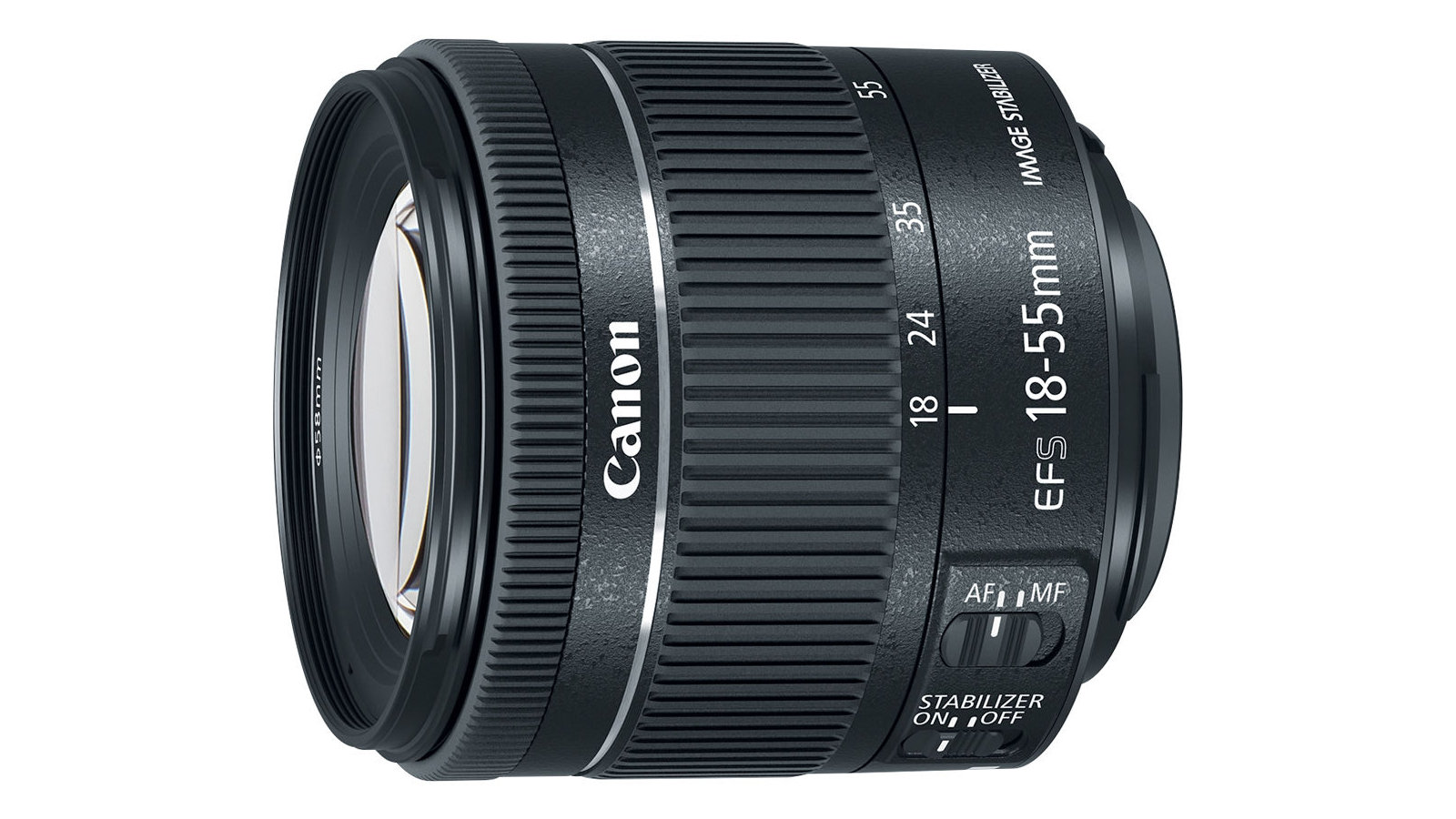
Centre-sharpness is pretty good on the whole, but drops off quite noticeably at the long end of the zoom range, while corner-sharpness is merely mediocre. Barrel distortion is of a similar order to that the also popular Canon EF-S 15-85mm when using both lenses at their shortest zoom setting, despite the 18-55mm having a more limited viewing angle. All in all, image quality is good rather than entirely great but overall performance is pleasing.
Lab results
We run a range of lab tests under controlled conditions, using the Imatest Master testing suite. Photos of test charts are taken across the range of apertures and zooms (where available), then analyzed for sharpness, distortion and chromatic aberrations.
We use Imatest SFR (spatial frequency response) charts and analysis software to plot lens resolution at the center of the image frame, corners and mid-point distances, across the range of aperture settings and, with zoom lenses, at four different focal lengths. The tests also measure distortion and color fringing (chromatic aberration).
Sharpness:
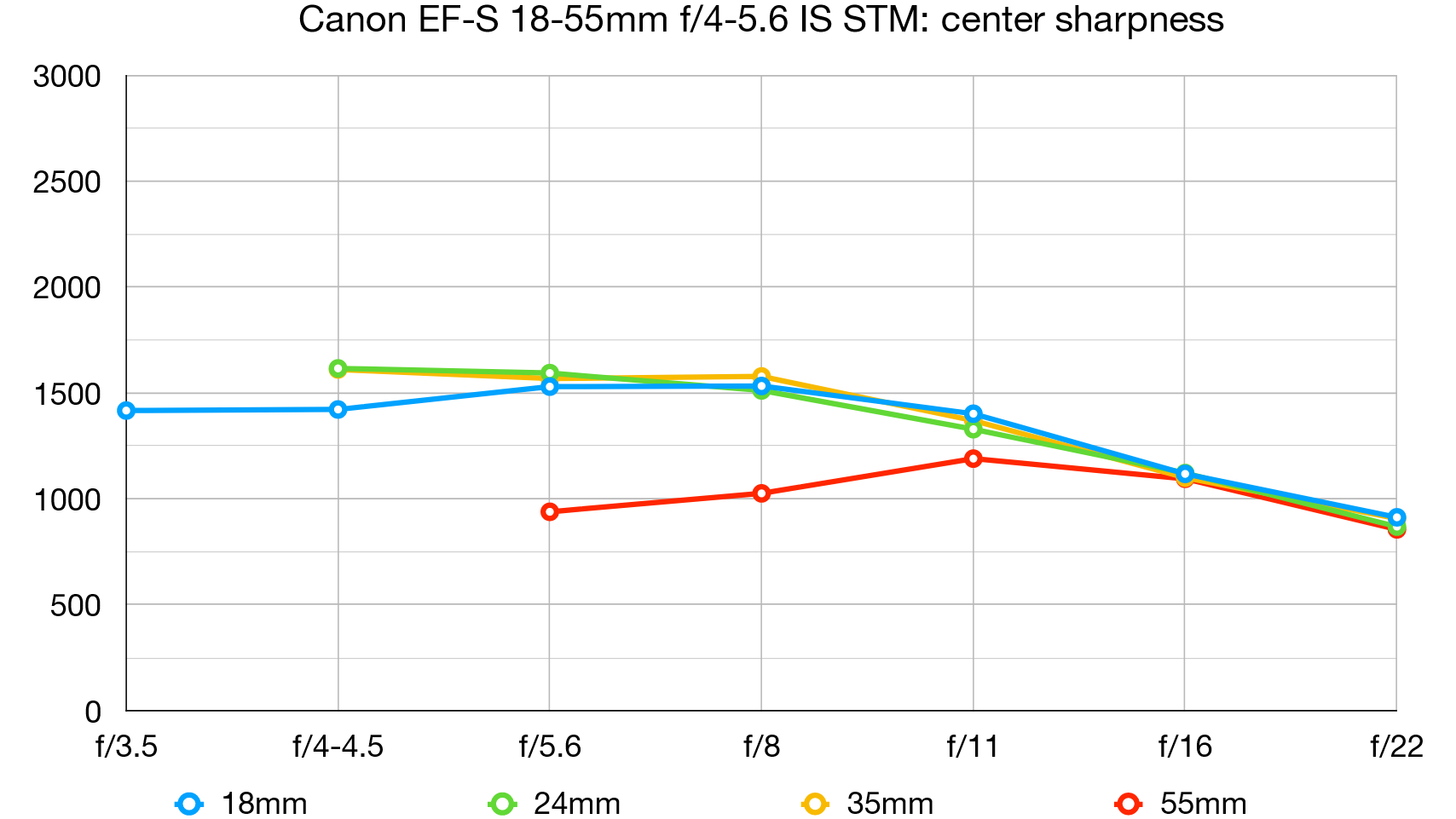
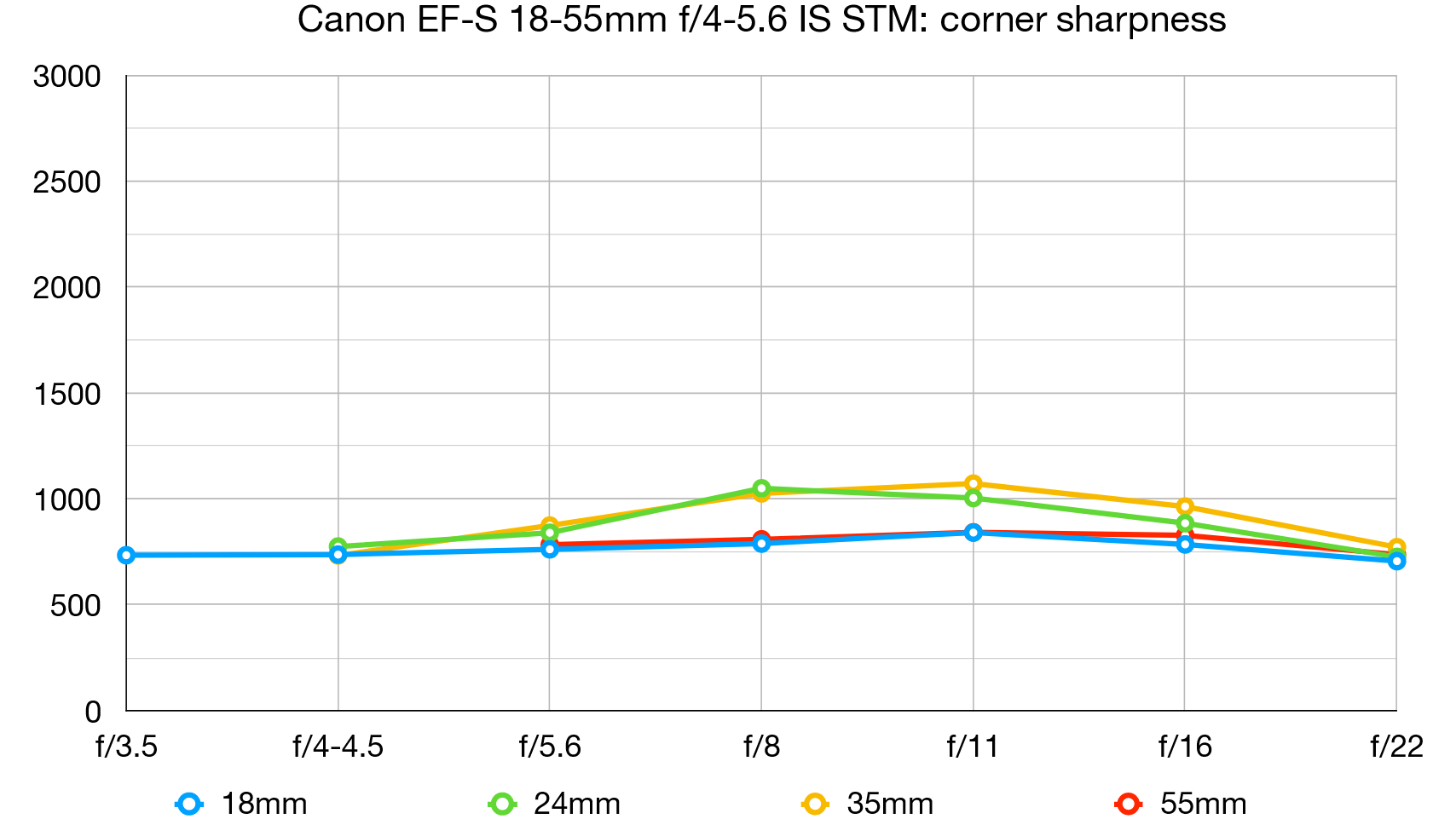
Levels of sharpness are good on the whole but a bit lacking towards the extreme edges of the frame, throughout the zoom range. Sharpness across the whole image frame drops off noticeably at the long end of the zoom range.
Fringing:
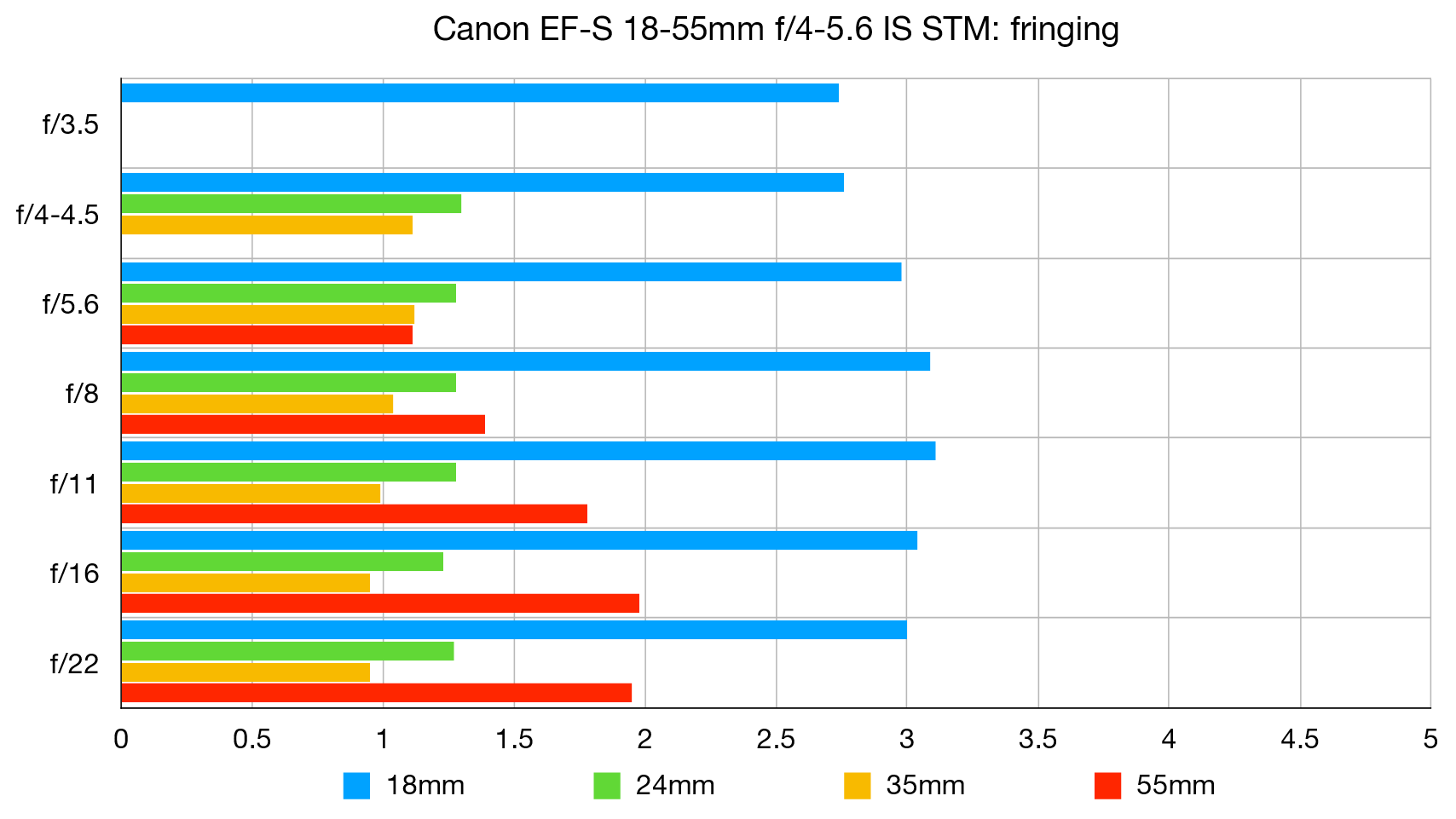
At the short end of the zoom range, color fringing can be quite noticeable when uncorrected in-camera. It becomes more minimal at medium to long focal lengths.
Distortion:
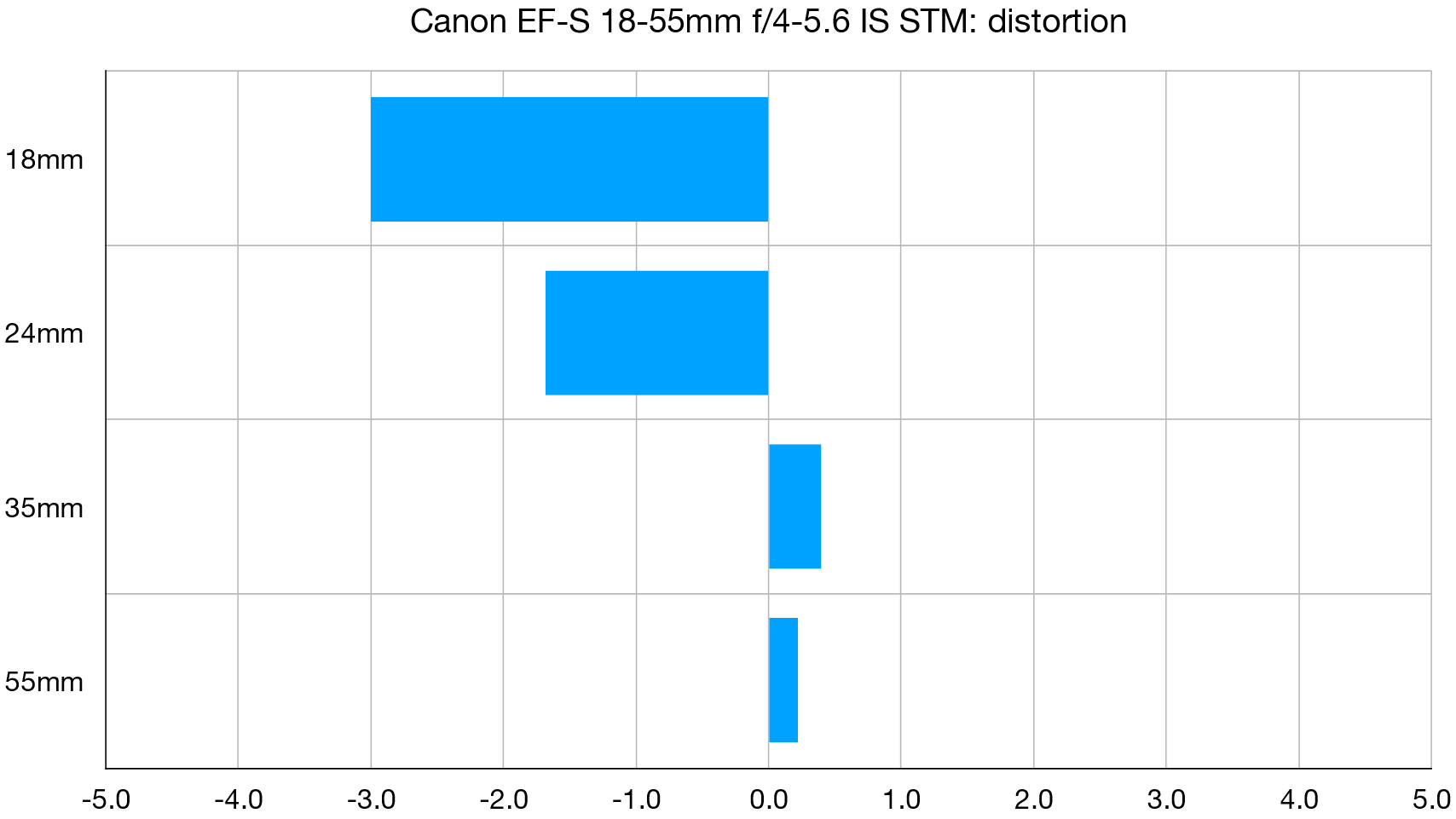
Barrel distortion is evident at 18mm when uncorrected, less so at 24mm. Pincushion distortion is very minimal in the 35-55mm sector of the zoom range.
Verdict
This lens is often bundled with Canon’s entry-level APS-C format DSLRs as part of a complete kit but is a good-value purchase in its own right. Upgrades over the older IS II kit lens include a far superior autofocus system, which is quick and virtually silent. Handling is also improved. It’s compact and lightweight yet gives a pleasing overall performance, making it good value at the price.
Read more:
• Best budget DSLRs
• Best camera lenses to get
• Best Canon lenses
• Best Nikon lenses
• Best Sony lenses
Matthew Richards is a photographer and journalist who has spent years using and reviewing all manner of photo gear. He is Digital Camera World's principal lens reviewer – and has tested more primes and zooms than most people have had hot dinners!
His expertise with equipment doesn’t end there, though. He is also an encyclopedia when it comes to all manner of cameras, camera holsters and bags, flashguns, tripods and heads, printers, papers and inks, and just about anything imaging-related.
In an earlier life he was a broadcast engineer at the BBC, as well as a former editor of PC Guide.


